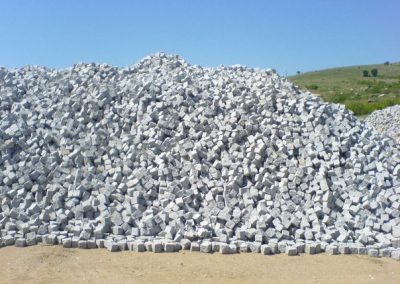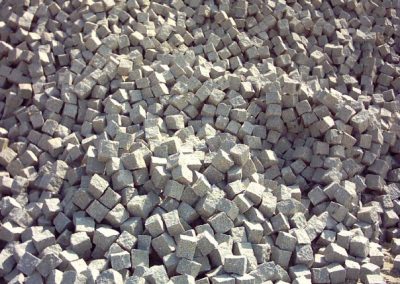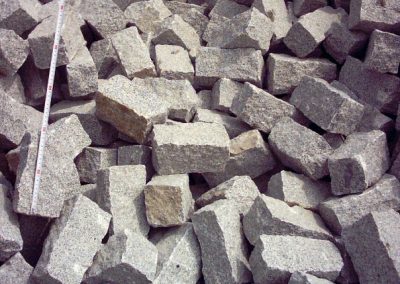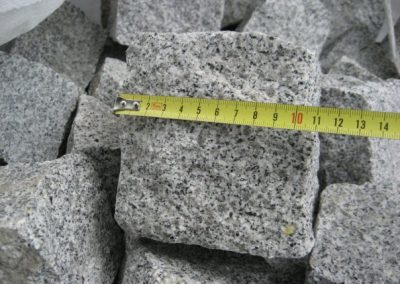PAVING STONES USED FOR COVERING IN ACCORDANCE WITH O NORM B3180
Usage:
For shaping squares, pedestrian zones, parks, draining, edge-marking stripes, ditch coverings, garage entrances, front square shaping, roads leading to home entrances, all types of highly-loaded transport areas, double small paving stones and also used for covering of gutters and big channels.
| Sort | Type | Trade label | Width cm | Height cm | Lenght cm | m2/g | ||||
|---|---|---|---|---|---|---|---|---|---|---|
| Small paving stones | HI | 6/81 | 6…8 | S…9 | 6…8 | 6,5 | ||||
| 6/8 II | 5,5…8,5 | 4,5…9,5 | 5,5…8,5 | |||||||
| Н2 | 8/101 | 8…10 | 7…11 | 8…10 | 5,0 | |||||
| 8/10II | 7,5…10,5 | 6,5…11,5 | 7,5…10,5 | |||||||
| НЗ | 10/12 I | 10…12 | 9…13 | 10…12 | 4,2 | |||||
| 10/12 II | 9,5…12,5 | 8,5…13,5 | 9,5…12,5 | Reception according to weight | ||||||
| Mosaic(marbled) stones | Н4 | Мозайка | 3…6 | 3…6 | 3…6 | 9,0 | ||||
| Double small paving stones | Н5 | Channel building stones | 10…12 | 9…13 | 20…24 | 4,2 | ||||
Processing of stones used for pavement covering:
Split, the front areas must be almost with the lower area, the side areas at a are acceptable according to the follow-right-squared and if possible in parallel right angle to the front area, deviations ing grading of classes.
First Class from HI to H4:
The sizes of the different stones must be within the specified limit values. Maximum 10 % of the total number to be delivered as the so called “semi-stones” (width less than the limit size, the lower limit, equal to half the width of the stone; stones with front trapezium-shaped area can be delivered up to maximum 15% of the total number.
The lower surface can be less bigger than the upper one (up to a correlation: 3:5). The split surfaces must be even, the differences between bulges and hollows to be 7 mm max. The colour and the structure must be unified.
Categories (classes) II (H1 to H3):
The sizes of the different pavement stones must be within the limit values. A maximum of 15% of the total number can be as the so called “semi-stones” (width less than the limit value, the lower limit equal to half the width of the stone).
A maximum of 25% of the total number can be stones with trapezium-shaped upper surface. The lower surface can be less bigger than the upper one (up to a Correlation of 3 : 5). The split surfaces must be even if possible, with no differences between the heights of bulges and hollows- max. 10mm.
Differences in colour and structure are allowed. For type H5 there isn’t an established differentiation between the classes, so the sizes from Table 4 must be observed. The side surfaces can be at a lower angle of a 2cm max. The split surfaces even if possible, with differences between the heights of bulges and hollows 7 mm max.
Differences in colour and structure are allowed.






